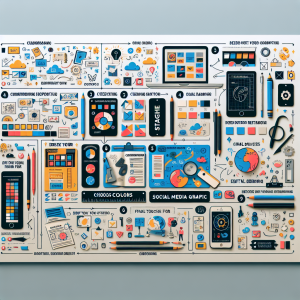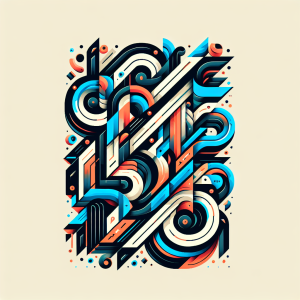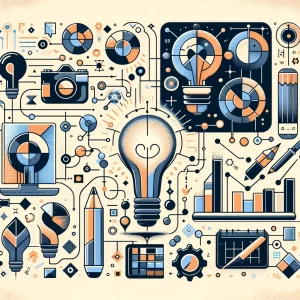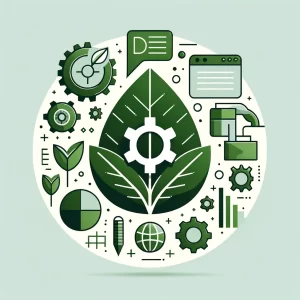

Introduction
Adobe Illustrator is a force to be reckoned with in the world of digital art and design. This powerful software has sculpted countless stunning graphics, logos, and illustrations. Known for its prowess in vector graphic manipulation, Illustrator invites artists to the world where scalability and detail preservation are paramount.
Understanding Illustrator and Vector Graphics
Vector graphics, unlike their rasterized counterparts, use mathematical formulas to create art. They comprise paths defined by a start and endpoint, and these paths can include additional points, curves, or angles. Logic dictates that vector graphics’ size and shape can be altered limitlessly, promising perfect fidelity.
Within this limitless arena strides Adobe Illustrator, a software respected and relied on by designers worldwide. Illustrator enables artists to create and manipulate vector graphics, offering an array of tools, options, and effects to breathe life into their ideas.
 The Basics of Creating Vector Graphics in Illustrator
The Basics of Creating Vector Graphics in Illustrator
Creating vector graphics in Illustrator can seem daunting to the uninitiated. But, the journey from beginner to expert starts with a single step: creating shapes. Circles, polygons, and squares can all be readily formed using the shape tools. They can be resized, reshaped, colored, and repositioned during creation or after the fact.
The key lies in handling the handles. Each point has two handles that determine the curvature of the line passing through that point. An understanding of these mechanics opens up the world of vector graphics’ freedom.
The Tools and Techniques for Designing Vector Art
Beyond basic shapes lurks an exciting realm of intricate designs and patterns. The Pen tool, the Pathfinders panel, the Gradient tool, and countless other advanced functions hold the key to this realm.
The Pen tool allows the creation of any shape, not just predefined ones. With the Pathfinders panel, simple shapes morph into complex designs. The Gradient tool fills shapes with color transitions, evoking depth, and dimension in a flat vector space.
These numerous functions, when combined, unleash the true power of vector designs. Mastering these tools require practice, patience, and above all, creativity.
Advantages of Using Vector Graphics
Vector graphics not only look sharp and clear but also boast several compelling benefits. They are scalable to any size without losing any detail or clarity – a feature novel to vector graphics. Whether on a business card or a billboard, vector graphics retain their crispness.

The resolution-independent nature of vectors makes them ideal for multi-platform design work. One design translates seamlessly from print to digital, large scale to small scale. Furthermore, file sizes are often smaller as vectors only need mathematical data, not individual pixel data.
Real-world Examples and Applications of Vector Graphics
The versatility of vector graphics is evident in various design undertakings. Think of the universally recognized logos (Apple, Nike, McDonald’s, etc.) – all vector designs. They stand as testaments to the scale-adjusting prowess of vector graphics.
Not just limited to logos, vector graphics are widely used in making cartoons, infographics, typography, animation, and many more. In each instance, they offer unparalleled precision and scalability.
Conclusion
Adobe Illustrator, a titan in the field of graphic design, empowers designers with the tools to conquer the vector world. With its intricacies, Illustrator challenges the artist in us, while its versatility enchants clients and audiences alike.
Whether you’re a novice dipping your toes or an expert broadening your horizons, understanding Illustrator and vector fundamentals is pivotal to your graphic design journey. So get started, explore, create, and let Illustrator transform your design dreams into vector reality.







